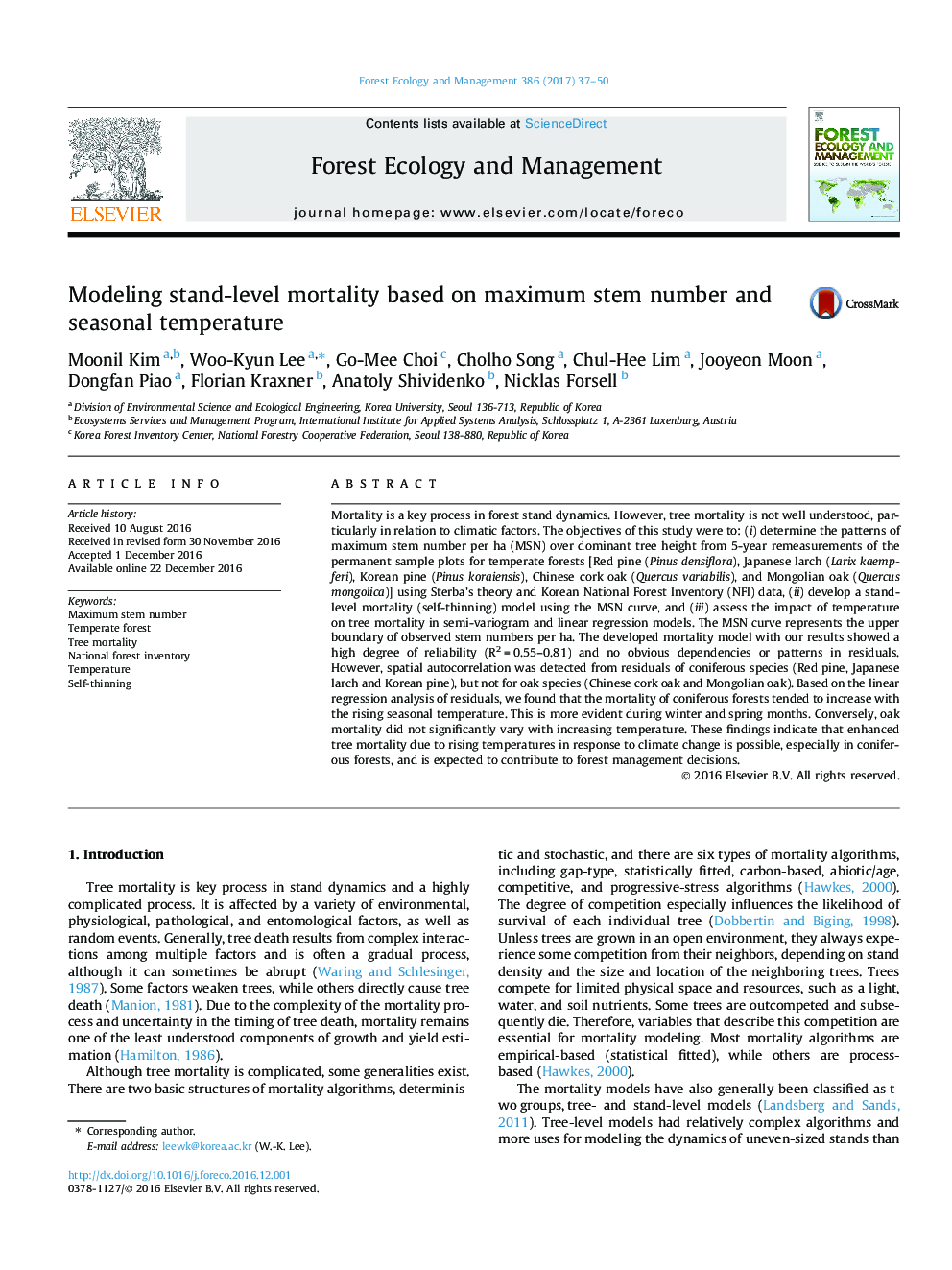| کد مقاله | کد نشریه | سال انتشار | مقاله انگلیسی | نسخه تمام متن |
|---|---|---|---|---|
| 4759592 | 1421372 | 2017 | 14 صفحه PDF | دانلود رایگان |
عنوان انگلیسی مقاله ISI
Modeling stand-level mortality based on maximum stem number and seasonal temperature
ترجمه فارسی عنوان
مدل سازی مرگ و میر در سطح پایه بر اساس حداکثر تعداد ساقه و دمای فصلی
دانلود مقاله + سفارش ترجمه
دانلود مقاله ISI انگلیسی
رایگان برای ایرانیان
کلمات کلیدی
حداکثر تعداد ساقه، جنگل معتدل، مرگ و میر درخت، موجودی جنگل ملی، درجه حرارت، خود ریزش
موضوعات مرتبط
علوم زیستی و بیوفناوری
علوم کشاورزی و بیولوژیک
بوم شناسی، تکامل، رفتار و سامانه شناسی
چکیده انگلیسی
Mortality is a key process in forest stand dynamics. However, tree mortality is not well understood, particularly in relation to climatic factors. The objectives of this study were to: (i) determine the patterns of maximum stem number per ha (MSN) over dominant tree height from 5-year remeasurements of the permanent sample plots for temperate forests [Red pine (Pinus densiflora), Japanese larch (Larix kaempferi), Korean pine (Pinus koraiensis), Chinese cork oak (Quercus variabilis), and Mongolian oak (Quercus mongolica)] using Sterba's theory and Korean National Forest Inventory (NFI) data, (ii) develop a stand-level mortality (self-thinning) model using the MSN curve, and (iii) assess the impact of temperature on tree mortality in semi-variogram and linear regression models. The MSN curve represents the upper boundary of observed stem numbers per ha. The developed mortality model with our results showed a high degree of reliability (R2Â =Â 0.55-0.81) and no obvious dependencies or patterns in residuals. However, spatial autocorrelation was detected from residuals of coniferous species (Red pine, Japanese larch and Korean pine), but not for oak species (Chinese cork oak and Mongolian oak). Based on the linear regression analysis of residuals, we found that the mortality of coniferous forests tended to increase with the rising seasonal temperature. This is more evident during winter and spring months. Conversely, oak mortality did not significantly vary with increasing temperature. These findings indicate that enhanced tree mortality due to rising temperatures in response to climate change is possible, especially in coniferous forests, and is expected to contribute to forest management decisions.
ناشر
Database: Elsevier - ScienceDirect (ساینس دایرکت)
Journal: Forest Ecology and Management - Volume 386, 15 February 2017, Pages 37-50
Journal: Forest Ecology and Management - Volume 386, 15 February 2017, Pages 37-50
نویسندگان
Moonil Kim, Woo-Kyun Lee, Go-Mee Choi, Cholho Song, Chul-Hee Lim, Jooyeon Moon, Dongfan Piao, Florian Kraxner, Anatoly Shividenko, Nicklas Forsell,
